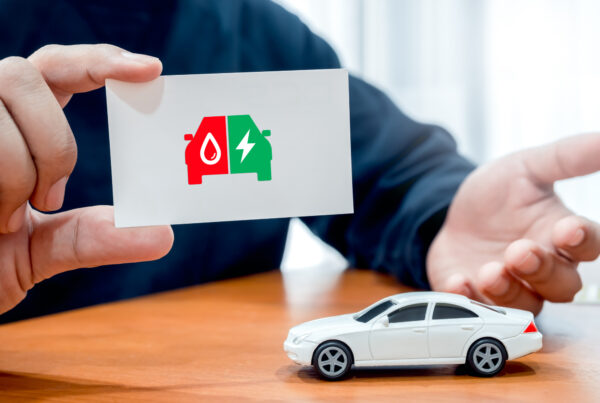When looking to electrify your entire fleet, or just one vehicle, there are many things to consider. It’s not as simple as just finding an equivalent sized vehicle. You will need to consider daily driving patterns, operating costs and required charging equipment. You need a strategy that focuses on picking the right vehicle and charging infrastructure.
New EV models are entering the market every day and just like any fleet vehicle, choosing the right one is critical. In order to determine the appropriate EV, answer these questions:
What is the maximum distance the vehicle will drive in a day?
The first step is to understand the range requirements, which is most likely going to be determined on how far the vehicle will drive in a single day. There are some long-range battery electric vehicles (BEV) that can travel over 500 kilometres on a single charge. However, if the vehicle’s daily use is much smaller than this it may make sense to purchase a less expensive short-range model.
What is the current operating cost for the vehicle?
Currently, the purchase price of an electric vehicle is higher than its combustion counterpart. The way EVs come out ahead is that they have much lower fuel and maintenance costs. Refuelling with electricity is a fraction of the cost of petrol, and you can avoid maintenance costs, such as oil changes or replacing timing belts. EVs will save money over the lifetime of the vehicle.
What is the vehicle’s dwell time and where does it occur?
To ensure your vehicles are fully charged when they need to be, you have to consider where they sit and how long they will be there. This will determine how many charging stations you will need, where you should place them and the overall power requirements. Every fleet’s dwell time and location is going to be different so it is important to use data from your own fleet when reviewing this question.
Buying the vehicles is only the first step.
Planning infrastructure is one of the more difficult aspects of transitioning to electric. You must examine several factors when installing the necessary equipment.
Where is the optimal placement of the stations?
Understanding the driving patterns of your vehicles is the first step in figuring out where to install chargers. If daily driving distance is shorter it may make sense to have the vehicles charge at your depot or you could have them charge at your employee’s home.
How many & what type of chargers do you need?
The number of charging stations required will vary depending on the number of EVs, their duty cycles and their individual range. If the duty cycle of your vehicles is staggered, or if you have long dwell times, you may not require a charger for every EV.
What type of stations do you need?
There are three different types of charging equipment that are identified by the amount of power they use, which ultimately determines how fast they charge the vehicles. For installing chargers at a depot, it’s very likely you’d be looking at Level 2 or 3. If employees take vehicles home, you might choose Level 1 or subsidise a Level 2 station for their home.
| Level 1 – powerpoint + EV cable | Level 2 – AC charger 7kW | Level 3 – DC charger 25kW+ |
| 10-20km of range for every hour the vehicle is plugged in. It will top up, but not fully charge overnight. | Usually up to 40km of charge for every hour plugged in. Top up daily use in an hour, and fully charge overnight. | 150km or greater charge for every hour plugged in. These are roadside fast chargers, fully recharging some EVs in 20 minutes. |
Source: EV Council
What about driver habits?
How can you get your drivers to remember to plug in their EV when they return to the lot? How do you make sure a driver isn’t leaving the depot with insufficient charge? While these may seem like tough questions, they have simple answers: by managing telematics-based rules for electric vehicles.
Behaviours you could consider setting rules and alerts around:
- When an EV has low charge,
- When it enters a charging zone with low charge,
- When it exits a charging zone with low charge, and
- And when the vehicle is done charging
You might also consider identifying when a plug-in hybrid electric vehicle (PHEV) is running on fuel only and not optimising its electric cost-savings potential, and establishing ‘no-charge’ time rules to eliminate charging during peak electricity rates.
Figure out what your priorities are and see how rules can help simplify your day-to-day work.
A strategy is important when going electric
Fleet electrification can seem like a daunting task at a first glance, but all that is required is a solid strategy. The rules above, plus others available in a platform such as MyGeotab allow fleet managers to proactively manage their EVs to prevent issues and measure performance. As a fleet manager, you can use data to decide which EVs to procure, and then manage charging and driver behaviour in a cutting-edge fleet.
Learn more about Beyond Clarity and Geotab


















